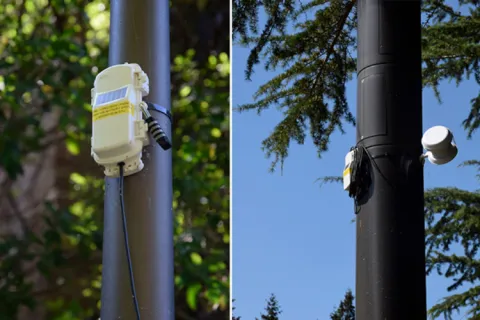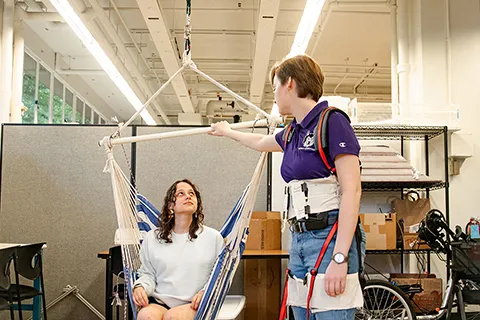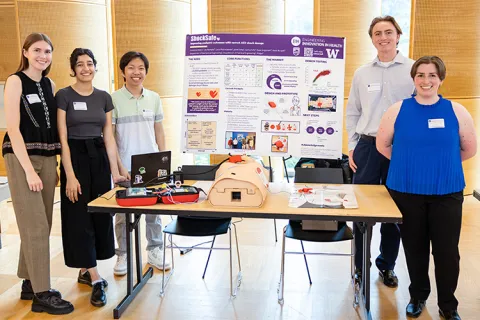Adaptable House
Adaptable Overhead Support System
One in five people have some kind of mobility need in their lifetime – temporary, permanent, progressive, or age-related. These limitations effect all demographics and come at a great cost -- Currently less than 1% of housing units are considered universally inclusive and over $46 billion globally is spent annually on elderly and disabled mobility devices. Despite these staggering numbers, current mobility solutions are expensive, difficult to use, and aesthetically uninspiring -- they typically strip away control, independence, and dignity while draining bank accounts. Additionally, individuals with fluctuating mobility capabilities (disabilities, aging, etc.) can have some days when they can walk well on their own and sometimes when they are unable to move around their house safety by themselves. While wheelchairs, walkers, bariatric lifts, and handrails meet many clinical needs, they do not meet the experiential or logistic residential needs of their users. Adaptable House aims to be a leader in the evolution of home design and home care in the 21st century, to support the elderly with dignity and health, and the physically challenged with innovations that make them stronger, happier, and longer lived. Adaptable House is bringing quality and hope into each day. Creating a lifestyle, not just a home. An important part of the design of an adaptable house is a mobility system that would avoid the limitations of traditional wheelchair and walkers, a model living house for living life at maximum freedom, that would evolve with the special needs and unique challenges of each person. As part of the adaptable house project, this student team worked to design and build an overhead gantry and track system to assist the user with three different levels of support: -- Independent, where the user is able to support their own body weight and walk on their own and the system can come when called, follow them around or provide slight resistance to support physical conditioning, and catch them if they fall. -- Intermediate, where the system takes a substantial portion of the body weight but still allows the user to walk. -- Fully supportive, where the user would sit in a sling or similar device and the system would lift them, carry them where they wanted to go, and lower them back down. The students on this project worked to focus on the load support interface with the user: to determine what type of harness or other support methods would be appropriate for each mode of operation and how to transition between them. Students on this project worked to focus on developing prototypes for how to support the required portion of body load by the overhead lift gantry in ways that maximize usability, comfort, and safety in the different operating modes. In all modes, the system the student team worked to create needed to cover a ~20x40 ft room, and to transfer the user to another track system in adjacent rooms. This project was one of 4 working on the Adaptable House mobility system. This student team also worked to collaborate with students on the other projects focused on the harness and support interface, and motion control (planar sway control, and lifting impedance control).
Faculty Adviser
Eli Patten,
ME Capstone Director,
Mechanical Engineering
Students
Megan Lee
Monica Santiago
Victoria Landrum
William Chuang
Related News

Fri, 09/20/2024 | UW Civil & Environmental Engineering
Smarter irrigation for a greener UW
A new project combines satellite data with ground sensors to conserve water and create a more sustainable campus environment.

Mon, 09/09/2024 | UW Mechanical Engineering
Testing an in-home mobility system
Through innovative capstone projects, engineering students worked with community members on an adaptable mobility system.

Mon, 08/19/2024 | UW Mechanical Engineering
Students strive to ensure accurate AED shock dosage
ShockSafe, developed by students with the help of mentors from Philips and Engineering Innovation in Health (EIH), can distinguish between children and adults during cardiac arrest emergencies.

Wed, 08/07/2024 | Snohomish County News
Snohomish County, University of Washington partnership boosts efficiency in enterprise scanning center
UW Industrial and Systems Engineering Capstone Project set to save Snohomish County over $40,000 annually.